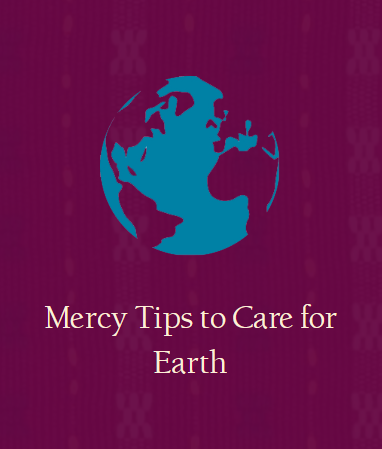By Marianne Comfort, member of the Mercy Justice Team
One of the most enjoyable aspects of adopting a more sustainable lifestyle is eating locally grown produce as much as possible. For my husband and me, that can be most of the year, with ample freezer space for storing foods prepared during the height of the season.
This is a good time for planning how to source local food. Will you tend to your own garden, participate in a community garden, purchase a share from a community supported agriculture farm or commit to visiting farmers’ markets regularly?
If you have a suitable yard or patio or deck you might want to consider growing your own produce. The Almanac offers a simple guide to starting a vegetable garden from choosing the right location to the types of vegetables and the best time to plant. Farmers’ markets usually sell starter plants early in the season or you can visit a local nursery. Our townhouse sits on a hill, with some woods at the bottom, so it is not ideal for gardening.
Those itching to get their hands in the dirt but who don’t have suitable space might want to research community gardens nearby. These are shared gardening spaces divided into small individual plots. A water source is usually provided and sometimes tools and even gardening expertise. You can always learn some tips from other gardeners you’ll be working alongside. The American Community Garden Association has a map that identifies many community gardens; you may also call your county cooperative extension office for information or search online . Our neighborhood doesn’t have a community garden. Since we choose not to own a car, it isn’t convenient to travel back and forth from a plot a mile or so away. In our area, community gardens seem to be more prevalent on park land, on the fringes of apartment parking lots and on vacant urban lots.
Community supported agriculture (CSA) is quite popular in many parts of the U.S. as a way to have a relationship with and support a particular farm or group of farms. Typically, participants sign up early in the year and pay upfront for all the produce they will receive throughout the designated season. This ensures that farmers and consumers share the benefits and risk of food production. Pickup is usually both on the farm and at sites centrally located to participants. You can choose the most convenient one that matches with your preferences. Another thing to pay attention to in choosing a CSA is whether you can select what you want at each pickup, or if you get a pre-set mix of whatever is in season. I personally enjoyed the weekly surprise over many previous years as a CSA member; I’d then get home and plan meals based on whatever I received.
Currently, my favorite way of accessing local produce is by regularly visiting a year-round farmers’ market. It’s set up in a downtown square filled with all kinds of vendors, sellers of a newspaper produced by people who are homeless, and often some musical entertainment. I know from their signs where the farms are located, and I can ask about their growing practices. My husband and I also enjoy finding farmers’ markets when we’re traveling, since they’re places to soak up local culture as well as buy produce. A simple online search is the best way to locate them.
No matter how you choose to source food locally, you’ll find satisfaction in developing a relationship with the land or local farmers and eating with the seasons. You’ll also be reducing your carbon footprint by avoiding purchases of food transported from great distances.








